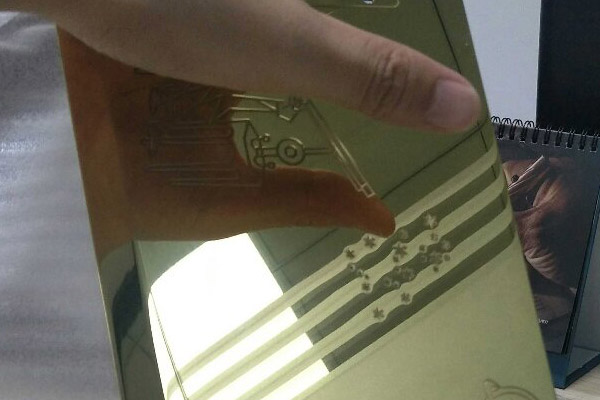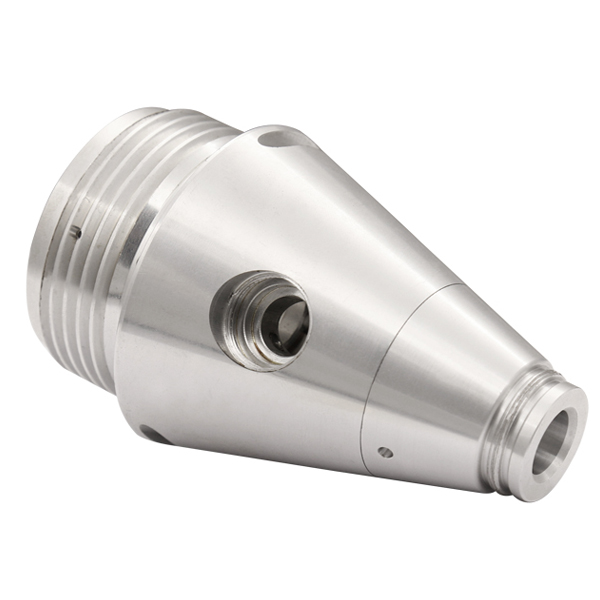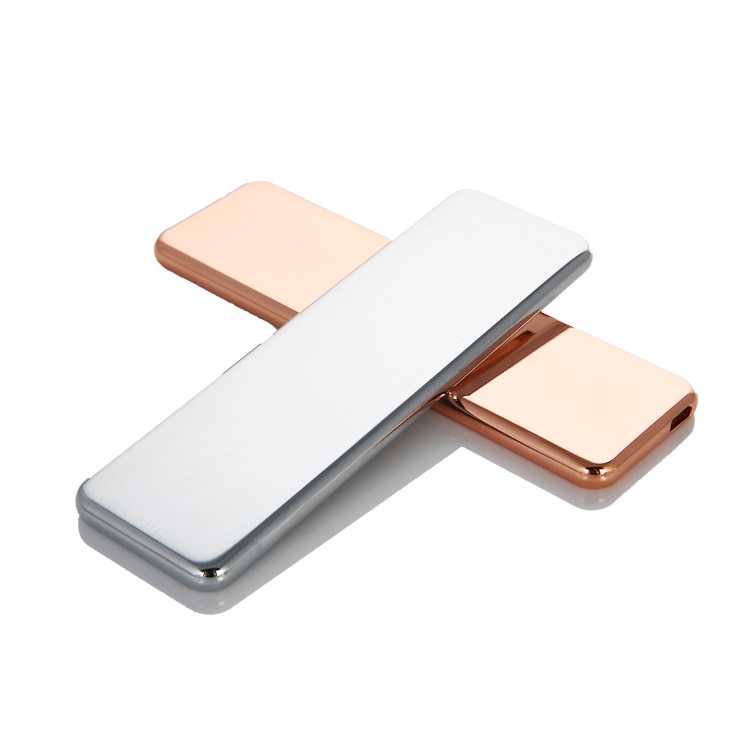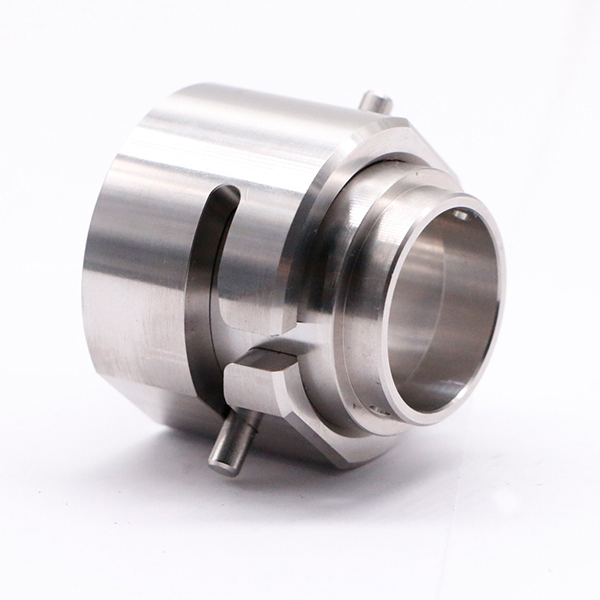What is the Mirror Effect?
A mirror finish, also known as a mirror-like or mirror-polished surface, refers to a highly reflective and smooth surface that resembles the appearance of a mirror. This effect is achieved through a meticulous finishing process that removes imperfections, irregularities, and roughness from a material’s surface, resulting in a surface that reflects light with minimal distortion. Mirror finishes are characterized by their exceptional shine, clarity, and the ability to reflect images and light sources with remarkable precision and detail. This type of finish is often sought after in various industries, including automotive, jewelry, electronics, and interior design, where aesthetics and a flawless appearance are essential.

How Much Surface Finish is Required for a Mirror Effect?
To achieve a mirror finish, the surface smoothness or roughness is typically measured using a parameter called surface roughness average (Ra). For a true mirror-like finish, an Ra value of around 0.02 micrometers (μm) or lower is often targeted. This level of surface smoothness is exceptionally fine and ensures that the surface is highly reflective and free from visible imperfections.
Keep in mind that achieving such a low Ra value requires precise surface finishing techniques, such as polishing or grinding, to remove all irregularities and micro-scale imperfections. This level of smoothness is commonly seen in applications where optical clarity and an impeccable reflective surface are essential, like high-end optical components, decorative surfaces, and certain automotive finishes.
Why Pursue the Mirror Effect?
Achieving a mirror-like surface finish serves several important purposes in various industries and applications:
Aesthetics: Mirror finishes are highly desirable for their stunning visual appeal. They provide a glossy and flawless appearance that enhances the overall look of products. This is especially crucial in industries like jewelry, automotive, and luxury goods.
Reflection and Clarity: Mirror finishes offer exceptional reflectivity, allowing for clear and distortion-free reflection of images and light sources. This is vital in optical and display applications, where precision and clarity are essential.
Hygiene and Cleanliness: The ultra-smooth surface of a mirror finish is easier to clean and maintain. It resists the buildup of dirt, grime, and contaminants, making it ideal for applications in healthcare, food processing, and cleanroom environments.
Corrosion Resistance: The removal of surface imperfections through the polishing process can enhance a material’s resistance to corrosion and environmental damage. This is valuable in applications where durability and longevity are critical.
Improved Functionality: In some cases, mirror finishes serve a functional purpose. For example, in optical systems, a mirror-like surface is necessary to maintain the accuracy and performance of lenses and mirrors.
Enhanced Light Reflection: Mirror finishes are used in lighting applications to maximize the reflection of light, improving the efficiency of lighting fixtures and ensuring better illumination.
Reflective Coating Base: A mirror finish can serve as an ideal base for applying reflective coatings, such as those used in mirrors and optical devices.
Brand Image and Luxury: In industries like luxury goods and high-end electronics, a mirror finish can be a symbol of quality, craftsmanship, and exclusivity, enhancing a brand’s image.
Overall, achieving a mirror-like surface effect is driven by a combination of functional requirements and aesthetic preferences, making it a crucial aspect of many manufacturing and design processes.
Achieving Mirror Effects: Surface Treatments, Processes, Benefits, Prices and Applications
Several surface treatment methods can be used to achieve a mirror finish on parts and components. Each method has its own process, advantages, disadvantages, and suitability for specific applications. Here are some common methods for achieving a mirror-like surface finish:
Polishing:
Process: Polishing involves abrasive materials and compounds to remove surface imperfections and create a smooth, reflective finish. It often employs progressively finer abrasives.
Advantages: Provides excellent mirror finishes, especially on metals. Can be used on a wide range of materials.
Price Comparison: Relatively cost-effective for small to medium-sized parts. Labor-intensive for intricate or large components.
Suitability: Suitable for jewelry, automotive trim, decorative items, and optical components.

Electroplating:
Process: Electroplating involves depositing a thin layer of metal (e.g., chrome, nickel) onto the part’s surface using an electrochemical process.
Advantages: Offers a durable and highly reflective surface. Provides excellent corrosion resistance.
Price Comparison: Cost varies based on part size, plating material, and complexity. Generally affordable for most applications.
Suitability: Suitable for automotive trim, bathroom fixtures, and parts requiring both aesthetics and protection.

Buffing:
Process: Buffing utilizes buffing wheels and abrasive compounds to remove imperfections and create a smooth, polished surface.
Advantages: Effective for achieving mirror finishes on various materials. Can be used for localized or large-scale polishing.
Price Comparison: Generally cost-effective, but labor-intensive for intricate or large parts.
Suitability: Suitable for metals, plastics, and composite materials. Commonly used in jewelry, cookware, and industrial components.
Chemical Polishing:
Process: Chemical polishing involves the immersion of the part in a chemical bath that selectively dissolves and smoothes the surface.
Advantages: Can achieve highly reflective finishes with precise control. Suitable for complex geometries.
Price Comparison: Costs can vary, depending on the size and complexity of the part. May be more expensive than mechanical methods.
Suitability: Suitable for intricate parts, optical components, and high-purity metals.
Vapor Polishing:
Process: Vapor polishing uses a vaporized solvent to melt and smooth the surface of thermoplastic materials.
Advantages: Provides a clear and glossy finish on plastics. Suitable for complex shapes.
Price Comparison: Typically cost-effective for plastic parts.
Suitability: Ideal for transparent plastics, acrylics, and lenses.
Diamond Turning:
Process: Diamond turning is a precision machining method that uses a diamond-tipped tool to achieve ultra-smooth and reflective surfaces.
Advantages: Provides exceptional mirror finishes with high precision. Commonly used in optics.
Price Comparison: Can be expensive due to the specialized equipment and expertise required.
Suitability: Suitable for optical components, precision engineering, and aerospace applications.
It’s essential to choose the appropriate method based on the material, geometry, budget, and desired finish. Not all methods are suitable for all applications. For instance, electroplating may not be ideal for intricate parts with tight tolerances, while chemical polishing may not be suitable for all metals. Additionally, some methods may be more cost-effective for small-scale production, while others are better suited for mass production.
Which Metal Parts Can Use These Surface Treatments to Achieve a Mirror Effect?
These surface treatment methods can be used to achieve a mirror-like finish on various metal materials and alloys. Here are some common metal materials where these methods can be applied to attain a mirror finish:
Stainless Steel: Stainless steel parts can be polished, buffed, or electroplated to achieve mirror-like surfaces. This is common in the production of high-end appliances, cookware, and architectural elements.

Aluminum: Aluminum parts are often polished or electroplated to achieve mirror finishes. This is seen in automotive trim, lighting fixtures, and decorative elements.
Brass and Bronze Alloys: Brass and bronze parts can be polished or chemically treated to create mirror finishes, making them suitable for decorative items and musical instruments.
Copper: Copper components are often polished or electroplated to achieve mirror-like surfaces, commonly used in electrical connectors and decorative pieces.

Nickel and Chrome Plating: Nickel and chrome plating can be applied to various metals, including steel and brass, to create highly reflective surfaces. This is prevalent in automotive trim and bathroom fixtures.
Gold and Silver Plating: Gold and silver plating can be used on a variety of base metals to achieve mirror finishes, frequently employed in jewelry and high-end decorative items.
Titanium: Titanium parts can undergo precision machining processes like diamond turning to achieve mirror finishes, commonly used in optical and aerospace applications.
Plastics: While not metals, certain plastic materials, especially transparent thermoplastics like acrylic and polycarbonate, can be vapor polished to achieve mirror-like clarity.
High-Purity Metals: Materials like high-purity aluminum, copper, and others used in scientific and optical instruments can be chemically polished to achieve exceptional mirror finishes.
It’s important to note that the choice of surface treatment method and the specific material will depend on the application’s requirements, including aesthetics, corrosion resistance, and material properties. Additionally, the complexity of the part’s geometry and size can also influence the choice of method. Each material and method combination may have its own considerations and limitations, so careful selection is essential to achieve the desired mirror finish.
Difficulties and Solutions to Realize Surface Mirror Effect
Achieving a mirror-like surface finish can be challenging due to several factors, including material properties, part geometry, and the chosen surface treatment method. Here are some common challenges and solutions to attain a mirror finish:
1. Surface Imperfections:
Challenge: Surface imperfections such as scratches, pits, or blemishes can mar the mirror finish.
Solution: Careful inspection and preparation of the surface before treatment to remove imperfections. Use progressively finer abrasives or polishing compounds.
2. Material Selection:
Challenge: Some materials are inherently more challenging to achieve a mirror finish due to their hardness or composition.
Solution: Consider alternative materials or specialized treatments. For very hard materials, diamond turning or ultra-precision machining may be necessary.
3. Complex Geometries:
Challenge: Parts with intricate or complex geometries can be difficult to polish uniformly.
Solution: Utilize specialized polishing tools, flexible abrasives, or automated systems to ensure consistent polishing across all surfaces.
4. Contaminants and Oxidation:
Challenge: Contaminants, oils, or oxidation layers can hinder the polishing process.
Solution: Thoroughly clean the surface before treatment. Use cleaning agents or solvents to remove contaminants. Employ chemical treatments to remove oxidation layers.
5. Consistency and Uniformity:
Challenge: Achieving uniform thickness and reflectivity across large or irregularly shaped parts can be demanding.
Solution: Implement controlled and systematic processes with precise monitoring. Adjust process parameters as needed to ensure uniformity.
6. Hydrogen Embrittlement:
Challenge: In electroplating processes, hydrogen embrittlement can occur in some materials.
Solution: Employ post-plating baking processes to remove absorbed hydrogen and prevent embrittlement.
7. Cost and Time:
Challenge: Some methods, such as diamond turning or precision machining, can be time-consuming and costly.
Solution: Carefully assess the trade-offs between cost, time, and desired finish. Consider alternative methods for cost-effective results.
8. Surface Integrity:
Challenge: Aggressive polishing or plating can alter the material’s surface integrity.
Solution: Select processes that minimize material removal. Use post-treatment methods like passivation or sealing to restore surface properties.
9. Material Compatibility:
Challenge: Certain materials may not adhere well to plating or polishing methods.
Solution: Explore intermediary layers or coatings that enhance compatibility between the material and treatment.
10. Quality Control:
Challenge: Maintaining quality control and consistency throughout the process can be challenging.
Solution: Implement rigorous quality checks, including surface inspections, thickness measurements, and reflectivity tests.
Achieving a mirror finish requires a combination of expertise, precision, and attention to detail. The choice of the most suitable surface treatment method, coupled with proper preparation and quality control, is essential to overcome these challenges and produce a flawless mirror-like surface.
Typical Problems and Solutions for Achieving a Mirror Finish
While achieving a mirror-like surface is the goal, there are common issues that can arise during the surface finishing process. Here are some typical problems encountered when trying to attain a mirror finish and possible solutions:
1. Surface Scratches:
Issue: Scratches on the surface can disrupt the mirror effect.
Solution: Carefully remove scratches with progressively finer abrasives or buffing compounds.
2. Uneven Polishing:
Issue: Uneven polishing can result in areas with different levels of reflectivity.
Solution: Use consistent pressure and polishing techniques. Consider automated systems for uniformity.
3. Orange Peel Effect:
Issue: The surface may develop an “orange peel” texture, resembling the skin of an orange.
Solution: Adjust polishing or plating parameters. Ensure that the surface is adequately prepared before treatment.
4. Pitting and Porosity:
Issue: Pits or porous areas can mar the mirror finish.
Solution: Properly prepare the surface and select appropriate polishing or plating methods to minimize pitting.
5. Surface Contaminants:
Issue: Contaminants like oils or residues can interfere with the finishing process.
Solution: Thoroughly clean the surface before treatment and handle it with clean gloves to prevent contamination.
6. Oxidation and Corrosion:
Issue: Oxidation or corrosion can affect the reflective surface.
Solution: Remove oxidation layers through chemical treatments and apply corrosion-resistant finishes if needed.
7. Material Incompatibility:
Issue: Some materials may not respond well to certain polishing or plating processes.
Solution: Choose methods and materials that are compatible and consider intermediary layers if necessary.
8. Loss of Surface Integrity:
Issue: Aggressive polishing or plating can alter the material’s properties.
Solution: Minimize material removal and employ post-treatment methods like passivation to restore integrity.
9. High Cost and Time Consumption:
Issue: Achieving a mirror finish can be costly and time-consuming.
Solution: Carefully weigh the cost against the desired result. Consider alternative methods for cost-effective outcomes.
10. Quality Control Challenges:
Issue: Ensuring consistent quality and uniformity can be challenging.
Solution: Implement stringent quality checks and inspections throughout the process to catch and rectify issues early.
Addressing these common problems involves a combination of proper surface preparation, meticulous technique, and quality control measures. By identifying and resolving these issues, you can achieve the desired flawless mirror-like surface finish.
Achieving Mirror Effect FAQ
Certainly! Here are five common questions that customers often have about achieving a mirrored finish:
1. What is the mirroring effect in CNC machining?
The mirroring effect in CNC machining refers to the process of creating a perfectly symmetrical and reflective surface on a component. It involves duplicating a part with absolute precision, as if it were reflected in a mirror.
2. How can CNC machining achieve a mirror-like finish?
CNC machining achieves a mirror-like finish by carefully controlling the toolpath and tool selection. The machine’s precision and computer-controlled movements ensure that the surface is smooth and symmetrical.
3. What are the key factors for achieving a high-quality mirrored finish?
Several factors contribute to a high-quality mirrored finish, including machine calibration, tool sharpness, material selection, and the skill of the operator. Attention to detail and precision are crucial.
4. In which industries is a mirrored finish commonly used?
Mirrored finishes are often used in industries where aesthetics and precision are essential. This includes aerospace, automotive, medical devices, and high-end consumer products.
5. Are there any post-processing steps required to enhance the mirror effect?
Depending on the specific requirements, post-processing steps like polishing, buffing, or chemical treatments may be applied to further enhance the mirror effect and remove any imperfections.
6. What is the cost of achieving a mirrored finish?
The cost of achieving a mirrored finish can vary widely depending on several factors. These factors include the size and complexity of the component, the material used, the machining method, and the desired level of quality. Generally, achieving a high-quality mirrored finish may require more time and resources, which can increase the cost.
7. How long does it take to achieve a mirrored finish?
The time required to achieve a mirrored finish also varies based on factors such as the complexity of the part, the machining method, and the quality standards. In some cases, a simple part may take hours, while more complex components could take several days or even longer to achieve the desired mirrored effect.
8. Which industries benefit from mirrored finishes?
Mirrored finishes find applications in several industries where aesthetics and precision are critical. Some of the industries that benefit from mirrored finishes include:
Aerospace: Components with mirrored finishes are used in aircraft interiors and high-end equipment.
Automotive: Luxury car interiors and exterior parts often feature mirrored finishes.
Medical Devices: Medical instruments and devices require smooth, sanitary, and reflective surfaces.
Consumer Electronics: High-end gadgets and appliances often feature mirrored surfaces.
Architecture and Interior Design: Mirrored finishes are used for decorative purposes in buildings and interiors.
These FAQs should provide customers with a better understanding of the mirroring effect and how it can be achieved in CNC machining.